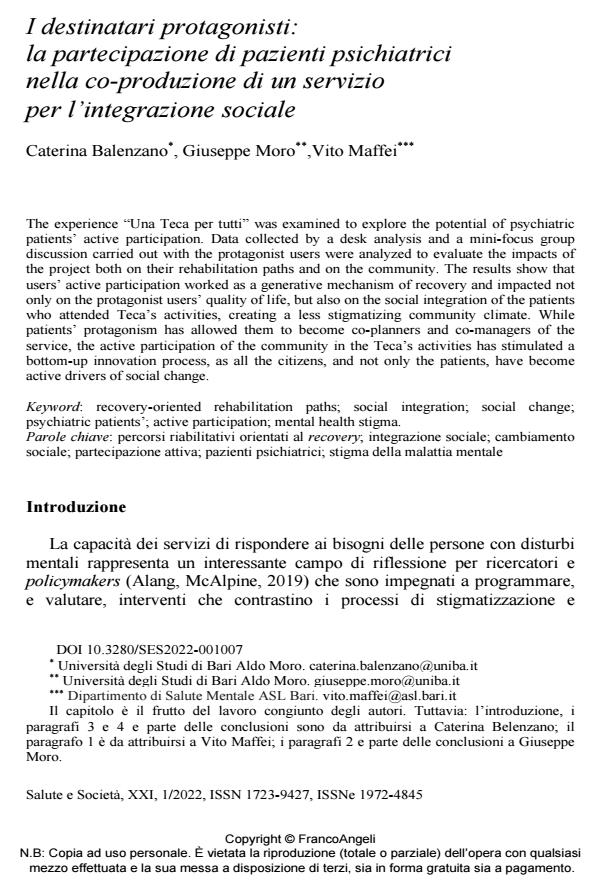I destinatari protagonisti: la partecipazione di pazienti psichiatrici nella co-produzione di un servizio per l’integrazione sociale
Titolo Rivista SALUTE E SOCIETÀ
Autori/Curatori Caterina Balenzano, Giuseppe Moro, Vito Maffei
Anno di pubblicazione 2022 Fascicolo 2022/1
Lingua Italiano Numero pagine 16 P. 97-112 Dimensione file 231 KB
DOI 10.3280/SES2022-001007
Il DOI è il codice a barre della proprietà intellettuale: per saperne di più
clicca qui
Qui sotto puoi vedere in anteprima la prima pagina di questo articolo.
Se questo articolo ti interessa, lo puoi acquistare (e scaricare in formato pdf) seguendo le facili indicazioni per acquistare il download credit. Acquista Download Credits per scaricare questo Articolo in formato PDF

FrancoAngeli è membro della Publishers International Linking Association, Inc (PILA)associazione indipendente e non profit per facilitare (attraverso i servizi tecnologici implementati da CrossRef.org) l’accesso degli studiosi ai contenuti digitali nelle pubblicazioni professionali e scientifiche
The experience "Una Teca per tutti" was examined to explore the potential of psychiatric patients’ active participation. Data collected by a desk analysis and a mini-focus group discussion carried out with the protagonist users were analyzed to evaluate the impacts of the project both on their rehabilitation paths and on the community. The results show that users’ active participation worked as a generative mechanism of recovery and impacted not only on the protagonist users’ quality of life, but also on the social integration of the patients who attended Teca’s activities, creating a less stigmatizing community climate. While patients’ protagonism has allowed them to become co-planners and co-managers of the service, the active participation of the community in the Teca’s activities has stimulated a bottom-up innovation process, as all the citizens, and not only the patients, have become active drivers of social change.
Parole chiave:percorsi riabilitativi orientati al recovery; integrazione sociale; cambiamento sociale; partecipazione attiva; pazienti psichiatrici; stigma della malattia mentale
Caterina Balenzano, Giuseppe Moro, Vito Maffei, I destinatari protagonisti: la partecipazione di pazienti psichiatrici nella co-produzione di un servizio per l’integrazione sociale in "SALUTE E SOCIETÀ" 1/2022, pp 97-112, DOI: 10.3280/SES2022-001007